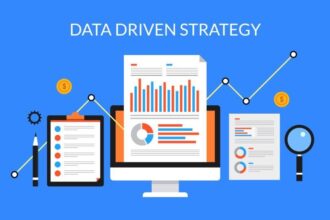Technology is moving to the cloud. We no longer use our precious SSD space to store the pictures from our recent holidays. Our personal files are located on Dropbox, Google Drive or any other storage or sharing service. This not only helps in keeping the files safe from the hardware malfunctions, but also assists in sharing the data with our networks. Besides these obvious incentives there are a growing number of reasons to use cloud-based project management.
Technology is moving to the cloud. We no longer use our precious SSD space to store the pictures from our recent holidays. Our personal files are located on Dropbox, Google Drive or any other storage or sharing service. This not only helps in keeping the files safe from the hardware malfunctions, but also assists in sharing the data with our networks. Besides these obvious incentives there are a growing number of reasons to use cloud-based project management.
When it comes to increasing your own productivity or the productivity of your team, it is always handy to have a solid project management (PM) tool in place. Although the technology has been in place for years and its use seems intuitive, it is not always possible to find a truly efficient PM tool in terms of the usability, functionality and price.
In this article I will discuss the main reasons for using a cloud-based project management tool, focus on the useful data you can collect through such a tool, and provide some practical examples on how you can use data within the project management tool to increase the efficiency of yourself and your team.
Advantages of cloud-based PM software
One of the obvious advantages is that your team does not really need to spend any effort on setting up and maintaining the server. Hence, you don’t need to devote any employee hours into having your system in place and there is no need to cover hosting costs. The idea is to allow you to focus on your tasks and not be bogged down by other stuff like servers and tech guys.
Another great advantage is that you can easily preview the system with your team without actually committing a lot of time. As there is no installation involved, it is possible to just sign up, play for a few minutes with the system, and recognize the usability. It is much better to spend 15 minutes on testing an unsuitable product than spending a few days on a setting the system up and then deciding whether it was or was not the right choice. Saving money and time is paramount for your projects.
Finally, there is just a much wider choice of PM systems if you are looking for a cloud-based solutions. With any growing industry, it is rife with products and services competing for your business.
Analyzing the data
Most of the PM systems are here to assist you in gettings things done. A proper system should also provide the necessary amount of data to make you understand whether you are getting things done the right way or the wrong way. Further, the ability to understand and interpret that data will be a deciding factor. This is why I find the following items to be vital for any effective PM software.
Time / Cost tracking
If you are running a business, there are always costs involved. This is why it is vital to have a system in place that allows co-workers to log their time spent on a particular task and lets the management assign the monetary value to each of the co-workers’ hours. Hence, having a clear picture about the costs involved in the development and maintenance of a certain project will be quite powerful data for the strategic decision-making processes involved in your particular project.
Detailed vs Fast Planning
Sometimes execution goes wrong and projects are delayed, but in many cases the actual issues happen during the planning phase of the project. While allocating time for a certain task and tracking the time spent can be important, I feel that the planning capabilities have more significant impact. I believe that any activity that takes more than five minutes of someone’s time should come with a ticket, hence one should be able to create a task with a lightning-fast speed. However, if the task is expected to take days, weeks or even months, it is important to benefit from a detailed text editor. In other words, a powerful PM software should come with both – fast task creation features and a handy editor that allows describing tasks in an easy manner.
Customisation
Finally, customisation is something that just makes the whole experience of using the software more appealing. The more items you can customise – the better. Ideally, customisation options should not influence the whole PM system, but rather should be set up separately for each of the projects.
Leading PM Systems
I have personally tried over a dozen of different tools for managing the projects: Wrike, Asana, Jira, Teamwox, Workfront (previously Attask), Prodcteev, Trello, Weekdone and many more, but I have never encountered something as useful as Freedcamp, a PM app I totally fell in love with. If you want to optimize further, you can, for example, integrate Asana with Trello via an automation platform like Tray.
(Sample screenshot from the Freedcamp site, as I don’t want to share sensitive data from my projects)
Even though there are far more developed applications that are backed up with hundreds of developers, the reason I am voting for Freedcamp is that I am just amazed how well a few very talented and motivated developers have designed the software. While this tool would have 80% of the features you need, it certainly excels in the customisation.
First of all, this tool lets you structure data viewing options just the way you want and structuring the data behind the tasks and projects is the key to efficiency. Next to this, it is possible to setup the necessary modules for each of the projects, so there is no place for redundant information. The tool also comes with powerful integrations with Google Drive, Bug Tracker, Time Tracker, as well as a comfortable personal to-do list, and even a CRM.
An important thing to keep in mind is that any project management tool is as useful as you make it, hence you should have a clear overview about the tasks you need to accomplish, their complexity and frequency before choosing the right PM tool. By the way, what software do you use to manage your projects?







